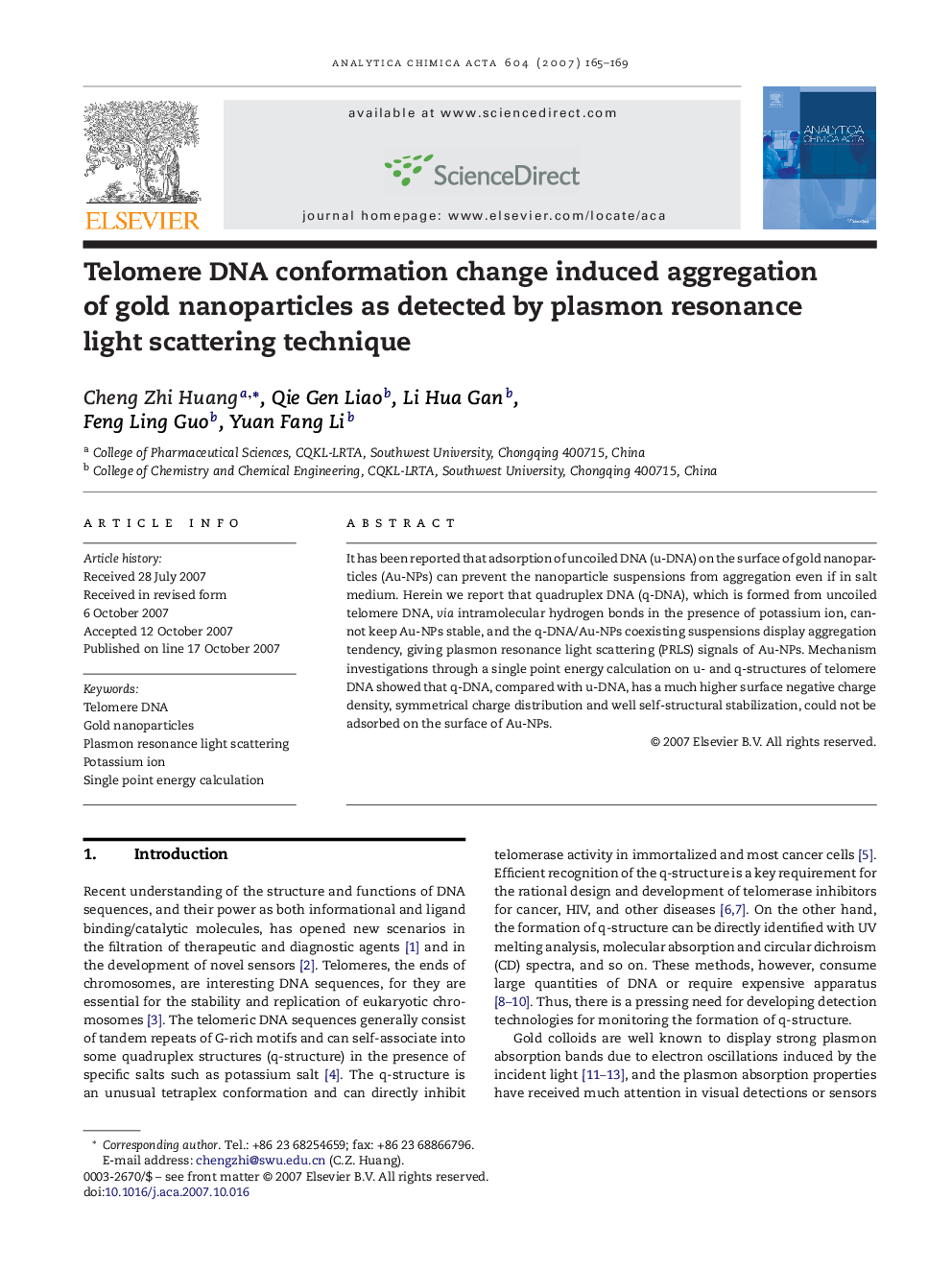| Article ID | Journal | Published Year | Pages | File Type |
|---|---|---|---|---|
| 1170588 | Analytica Chimica Acta | 2007 | 5 Pages |
It has been reported that adsorption of uncoiled DNA (u-DNA) on the surface of gold nanoparticles (Au-NPs) can prevent the nanoparticle suspensions from aggregation even if in salt medium. Herein we report that quadruplex DNA (q-DNA), which is formed from uncoiled telomere DNA, via intramolecular hydrogen bonds in the presence of potassium ion, cannot keep Au-NPs stable, and the q-DNA/Au-NPs coexisting suspensions display aggregation tendency, giving plasmon resonance light scattering (PRLS) signals of Au-NPs. Mechanism investigations through a single point energy calculation on u- and q-structures of telomere DNA showed that q-DNA, compared with u-DNA, has a much higher surface negative charge density, symmetrical charge distribution and well self-structural stabilization, could not be adsorbed on the surface of Au-NPs.
